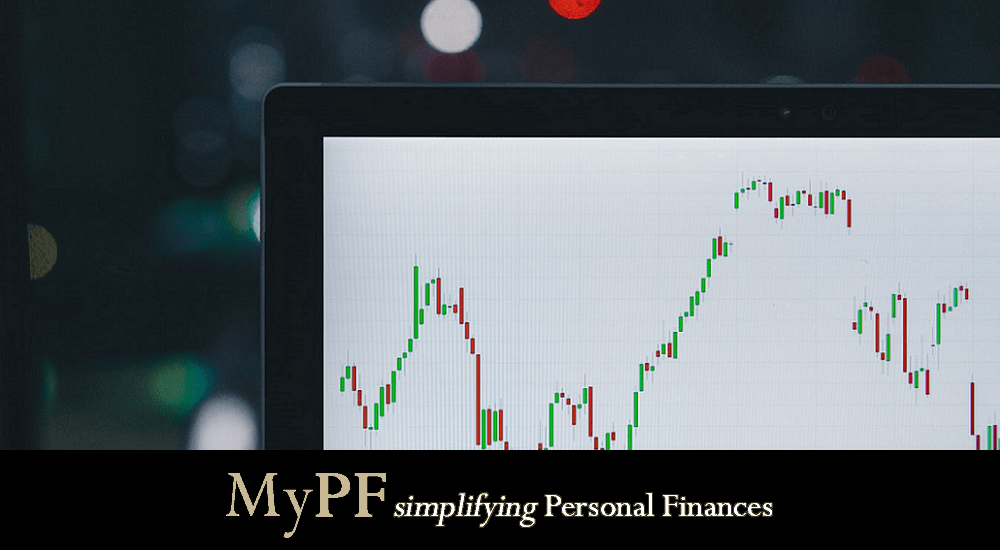The stock market can be a daunting place to the unprepared, so here are so tips and tricks to steer through the chaos.
Stock market volatility is an inherent and sometimes intimidating facet of the investment landscape, often stirring emotions of fear and uncertainty among investors. These unpredictable ups and downs can have a substantial impact, not only on individual investors but on a larger scale as well.
For individual investors, the fluctuations could mean a dent in their investment portfolios, while for institutional investors and market makers, it could signify broader financial implications.
Exploring, understanding, and employing strategies to navigate stock market volatility is an endeavour of significant importance. It’s an exercise in financial prudence that holds relevance not only for individual investors but for the larger economic framework within which financial markets operate.
Contents
Understanding Stock Market Volatility
Stock market volatility is largely influenced by the uncertainty within financial markets, driven by various events and factors. Unanticipated events such as sudden geopolitical shifts or unexpected financial data releases can trigger significant reactions in the market.
Moreover, the sentiment of investors, swinging between optimism and pessimism based on unfolding events, adds fuel to market volatility. The interaction of these elements creates a complex market environment where prices can fluctuate widely over a short period.
Volatility merely signifies the extent of price swings, regardless of whether prices are up or down. Often, the emotion of fear is tied to volatility, especially during bear markets, stock market crashes, or other significant downward moves.
This association arises from the fear of loss that accompanies sharp market declines. Therefore, understanding the nature of volatility and the emotions it elicits is crucial for investors navigating through turbulent market times.
Preparing for Volatility
Preparation is a pivotal step in navigating market volatility. One of the cardinal rules of this preparation is diversification.
By spreading investments across different asset classes and sectors, investors can mitigate the risks associated with market volatility. Diversification aims to achieve smoother returns by reducing the impact of poor performance in any single asset class on the overall portfolio.
In addition to diversification, establishing an emergency fund is crucial. An emergency fund provides a much-needed financial cushion during turbulent times, preventing the need to liquidate investments unnecessarilty.
Moreover, regular financial reviews to reassess one’s financial goals and the alignment of the investment portfolio with these goals is a prudent practice.
Active Strategies
Active strategies demand a hands-on approach from investors.
Tactical asset allocation is one such strategy, involving the adjustment of asset allocations in a portfolio in response to changing market conditions. It entails rotating capital among different asset classes or sectors based on short-term forecasts of expected returns to maintain a desired risk-reward profile.
By doing so, investors can position themselves to capitalize on market opportunities while managing their exposure to market risks. This active engagement with the portfolio allows investors to respond swiftly to market changes, potentially enhancing the portfolio’s performance over time.
Hedging is another active strategy that can be employed to navigate market volatility. It involves using financial instruments like options and futures to offset the risks associated with adverse price movements.
Hedging can provide a level of insurance, helping to mitigate losses and potentially generate profits from the hedging positions during volatile market conditions. As markets oscillate and adapt to broader economic changes, hedging instruments can provide investors with opportunities to manage their portfolio risks actively.
Passive Strategies
The Buy-and-Hold strategy exemplifies this approach, where investors buy stocks or other securities and hold onto them for the long term, irrespective of the short-term market fluctuations. This strategy operates on the belief that in the long term, the value of investments will appreciate despite interim market volatility.
It encourages investors to overlook short-term market noise and focus on the long-term potential of their investments. The simplicity and long-term focus of the Buy-and-Hold strategy make it a popular choice among investors seeking to navigate market volatility with a long-term perspective.
Dollar-Cost Averaging (DCA) is another passive strategy promoting regular investing of a fixed amount of money over time, irrespective of market conditions. DCA can be particularly beneficial during volatile markets as it allows for purchasing more shares when prices are low and fewer when prices are high.
Over time, this systematic investment approach can help lower the average cost per share, potentially mitigating the impact of market volatility. By adhering to a disciplined investment framework, investors can navigate the uncertainties of volatile markets while continuing to build their investment portfolio steadily over time.
Psychological Aspects
Some way to regulate our emotions in the stock market is to acknowledge emotions without letting them control investment behaviour is essential. Establishing a well-thought-out investment plan, practice mindfulness, and seeking the advice of a financial advisor can help in keeping emotions in check.
Maintaining a long-term perspective can also provide a level of emotional stability, helping investors stay focused on their long-term goals and make rational decisions even during turbulent market conditions.
These psychological tools equip investors with the mental resilience required to navigate through the emotional rollercoaster that often accompanies market volatility, thereby promoting long-term investment success.
Conclusion
The assimilation and implementation of the strategies discussed offer a robust framework for managing the multifaceted challenges posed by market volatility. It’s about fostering a culture of informed investing, preparedness, and strategic planning.
Such a culture not only tempers the risks associated with market volatility but also harnesses the potential opportunities nestled within the turbulent yet dynamic market environment.
The quest for financial stability and growth amidst market volatility is indeed a nuanced endeavour, and the strategies above can provide a solid foundation towards achieving this quest.
What other strategies have you employed when dealing with the uncertainty of the stock market? Let us know in the comments down below.










Leave A Comment